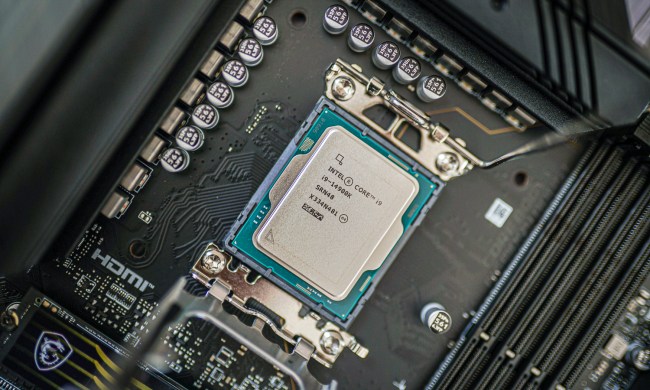
After countless articles and much anticipation, Intel is reportedly about to release some of the first desktop processors based on its Haswell-E specifications, which will, of course, support DDR4 memory and 8-core processors. However, of the three Haswell-E Core i7 CPUs expected, only one of them, the Core i7-5960X, will actually come with 8 cores, and it will sell for $999. The other two, the i7-5930K and i7-5820K, will contain only 6 cores, which is the same number found in the current Ivy Bridge-E generation processor.
Eight cores and more
Dubbed the Core i7-5960X Extreme Edition, the flagship CPU of the first Haswell-E lineup will be Intel’s first desktop, consumer-class 8-core processor. With two more cores and four more threads than the company’s current Ivy Bridge-E based Core i7-4960X Extreme Edition processor, the i7-5960X will be aimed at gaming and hardware enthusiasts. Built around the 22nm Haswell architecture, this new 8-core CPU, due primarily to the increased power efficiency of the Haswell micro-architecture, will provide improved inter-process communication (IPC) while using close to the same amount of power.
The Core i7-5960X will be clocked at a 3.0GHz base, with a 3.3GHz boost frequency. It will also include support for the latest DDR4 2133MHz memory, and 20MB of L3 cache as well. In addition, its power rating will be 140 watts TDP, or only 10 more watts than the 6-core i7-4960X. The new DDR4 memory controller resides on the processor itself, through which the RAM is directly connected to the CPU, and the DDR4 modules themselves use only 1.2 volts of power, compared to DDR3’s 1.65/1.5 volts.
Overclocking
Designed for enthusiasts, Haswell-E processors will, like their Ivy-Bridge-E predecessors, offer versatile overclocking options. Memory and the CPU can be overclocked in numerous ways, including:
- Unclocked core ratios in 80/100 increments
- XMP mode support
- Unclocked turbo limits
- Support for memory up to 2667MHz
- Unlocked memory controller
- Unlocked voltage limits
And that’s a short list of the ways you can tweak this processor to get every last ounce of power out of it.
Two other new-generation chips
In addition to the 8-core Core i7-5960X, as mentioned above, we’ll see two other Haswell-E Core i-7 chips soon: the Core i7-5930K, and the Core i7-5820. Both are 6-core, 12-thread processors. Aside from clock speeds, their specifications are primarily the same. The i7-5930K runs at a 3.5GHz base, about a 3.9-4.0GHz boost, and it will list for around $550. The i7-5820K, on the other hand, will run at a 3.3GHz base, with a 3.6-3.8GHz clock boost. It will list for around $300. Both will support a 15MB L3 Cache.
When will we see 8-Core CPUs?
All three processors will be compatible with Intel’s upcoming x99 chipset and motherboards. The new Haswell-E processors themselves are slated to show up later this year, perhaps during the fourth quarter, or even early 2015. We should start seeing new powerhouse PCs built around these new CPUs about the same time or soon thereafter.
However, at $1,000 a pop, PCs built around the 8-core i7-5690X probably won’t be mainstream machines. It’s more likely that we’ll see a lot more computers with one of the less-expensive, 6-core CPUs. In any case, there will always those gamers and other hardware enthusiasts who are constantly pushing their machines to the limit. Besides, in the long run, significant steps forward in computing power benefit all of us, regardless of what your PC budget is at this moment.


